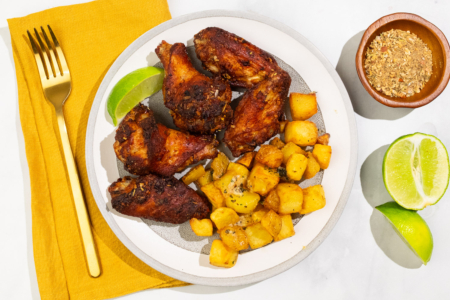Scallions, also known as green onions, are long, thin tender green leaves with stiff white stalks and hair-like roots. Scallions can be distinguished from spring onions by the size of the bulbs, as scallions have no true bulbs. We love scallions both cooked in dishes or raw as a finishing touch for various soups and meals.
History of Scallions
Scallions are from the lily family and belong to species in the genus ‘allium’. Described by Theophrastus, the Greek writer, the word “scallion” goes back to the term “askolónion”, which originated from an ancient city named Canaan located in Ashkelon.
Scallions were also known as “Welsh Onions” because in ancient German ‘welsch’ meant ‘foreign’.
Appearance Of Scallions
Scallion is near to 12 inches long, thin, hollow green tubes. They have white or red stiff shalk depending on variations, whose diameter is of a half-inch or less. They have stringy short roots at the end of the stalks.

They look a lot like spring onions with smaller or no bulbs. They are generally grown in bulk and harvested when young to get the best flavor out of it.
Flavor Of Scallions
Scallion can be eaten raw or cooked. They have a sharp distinctive, peppery, yet mild spicy flavor. However, they don’t make your eyes teary like normal onions. You can sprinkle scallions raw on your meals, or cook them a little at the end of preparing your meals.
Culinary Benefits of Scallions
The easiest thing you can use scallions for is garnishing. Soups, rice, noodles, stir frys, casseroles, and jambalaya all benefit from a sprinkling of scallion. You can use scallions in soups to enhance and add a mild peppery flavor to them. Check out the all-time favorite recipe for hot and sour soup, which features plenty of scallions.

For a quick creamy delight, you can also roast or grill scallions over medium to high heat with a little olive oil, salt, and lemon juice. This easy recipe makes for a great side dish to serve along with a variety of meals. A few other recipes we love with scallions include Succotash with Scallops, which makes a great lunch or dinner, or Oyakodon, which features tender pieces of chicken, udon noodles, egg, and scallions.
Storage
To store scallions, cut off the roots, rinse with cool water, and pat dry. to ensure they last for up to two weeks, we recommend wrapping the scallions in paper towels and storing in a open plastic bag in the refrigerator.



